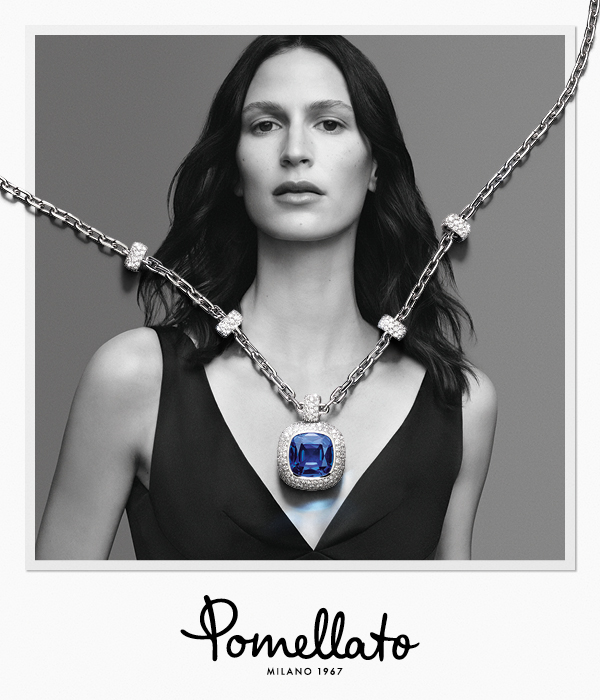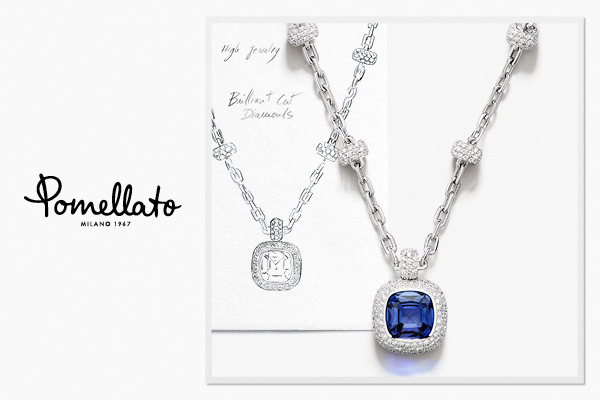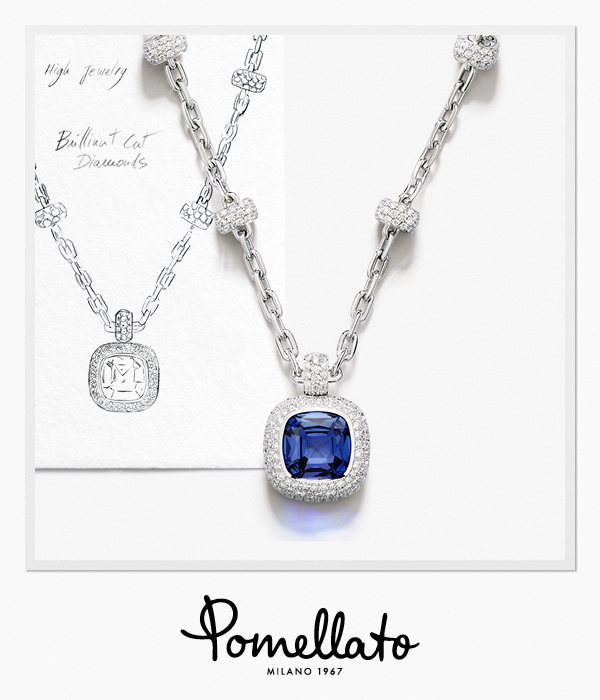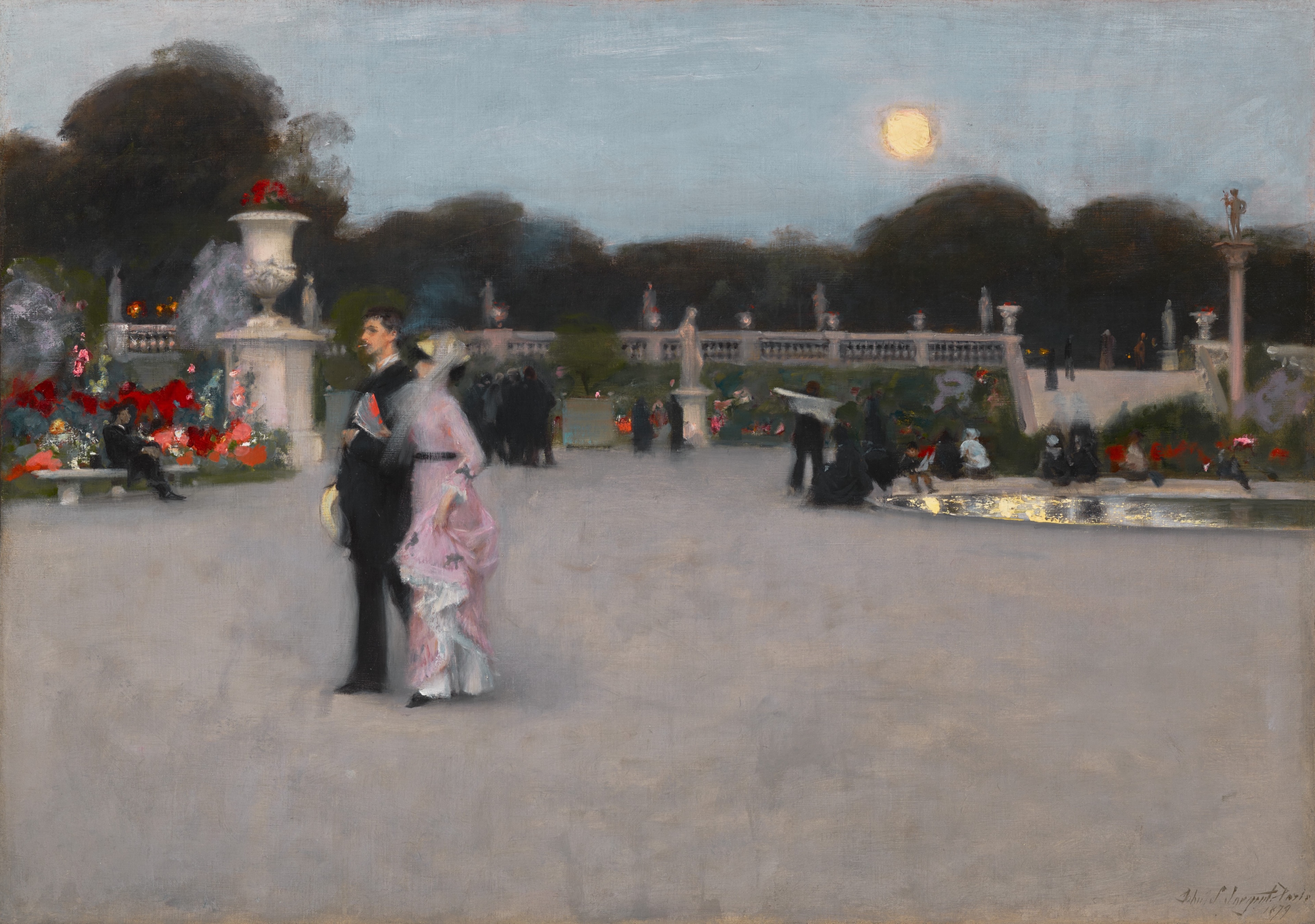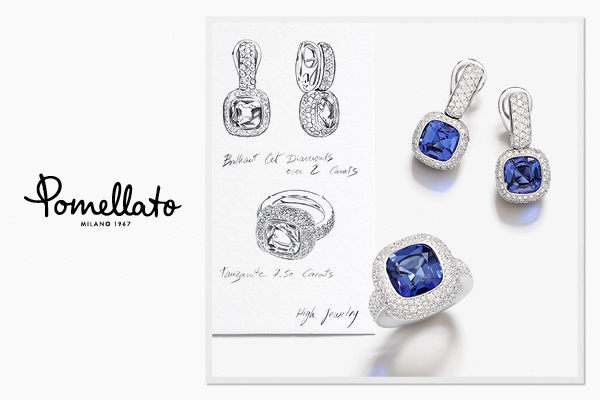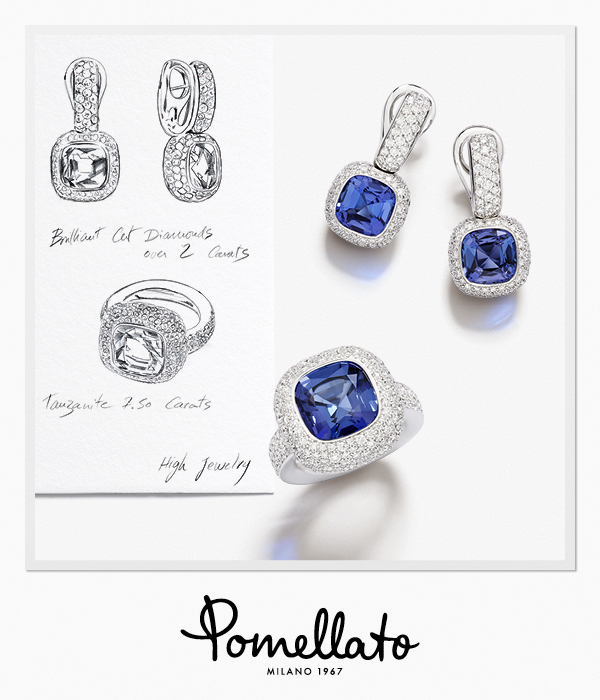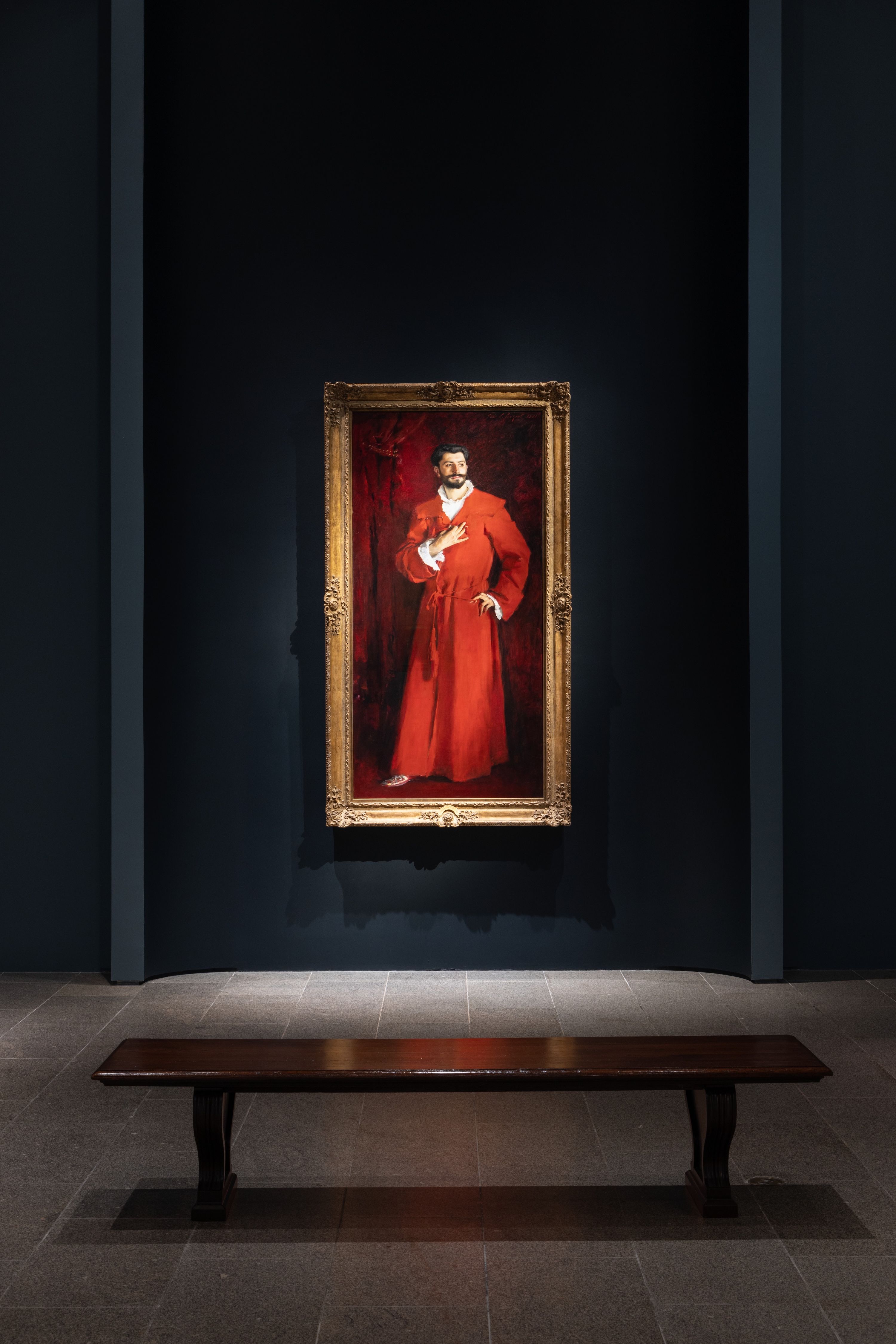Welcome back to Wall Power. I’m Marion Maneker.
I went to the
Met’s new Sargent and Paris show earlier in the week. It opens on Sunday and I have some impressions for you tonight. Sotheby’s also announced Orphist works (in the wake of the Guggenheim show) and others from the Joseph H. Hazen collection. Plus, Julie Davich tells us about Christie’s collaborative selling exhibition with Galerie Steinitz in Hong Kong, and explains why Mickey Mantle baseball cards are the champs.
|
|
|
A MESSAGE FROM OUR SPONSOR
|
At the intersection of artistry and innovation lies Nudo, Pomellato’s most iconic creation. Each
Nudo piece is a miniature masterpiece, where design creativity, expert craftsmanship, and gemstone mastery meet. The Nudo High Jewelry collection embodies Pomellato’s unique vision of precious jewelry, combining the collection’s signature lightness and wearability with new levels of creativity and craftsmanship.
LEARN MORE
|
|
|

|
Julie Brener Davich
|
|
- Steinitz goes to
Christie’s: The Galerie Steinitz booth at TEFAF Maastricht was a standout, to say the least—filled with the highest-quality 17th-18th century French furniture, clocks, chandeliers, tapestries, carpets, silk drapery, ornate boiserie, and even wood parquet flooring, all from castles, châteaus, and hotels, with provenance like de Rothschild and makers like Pineau and Boulle. Founded in 1968 by Bernard Steinitz, the
gallery’s tradition is carried on by his son Benjamin, who employs a staff of 30, including researchers and restorers, on Rue Royale, near the Place de la Concorde in Paris.
Now this historic gallery is collaborating with Christie’s on a selling exhibition at the auction house’s new Hong Kong headquarters. The presentation, on view through May 2, during Asian Art Week, features 20 pieces of 18th-century French decorative arts. It’s intended both to satiate and to fuel
growing interest in the category. “The market for French furniture in Asia, particularly mainland China, Japan, and South Korea, has seen a notable increase in demand over the past decade,” Melody Lin, senior representative for classic art at Christie’s Asia Pacific, told me. She attributes this to a surge in interest in high-quality craftsmanship and cultural and historical importance, as well as the interior design trend of blending the old and the new.
One of the works
is an ormolu-mounted porcelain vase, showcasing the influence of Chinese art, particularly porcelain, on French craftsmen. Other highlights are a center table, circa 1800, by Pierre-Philippe Thomire, the preeminent bronzier of the time, from the Rothschild family collection, and a pietra dura tabletop casket from the Grand Ducal workshop in Florence. Prices start at €100,000 and go up to €1 million.
|
Object
Lesson: Grading Mickey Mantle
|
1952 Topps Mickey Mantle #311 SGC VG-EX 4
|
In 2022, Heritage Auctions set the world record for a sports card with a 1952 Topps
Mickey Mantle—one of the true holy grails of the memorabilia industry. Mantle’s rookie season was technically 1951, but he got injured, was sent to the minors, etcetera. In 1952, he displaced Joe DiMaggio as the Yankees’ starting center fielder. And while there’s a Bowman card from his 1951 inaugural season, the Topps card has become his de facto rookie card.
That ’52 Mantle was graded a Mint+ 9.5, out of 10—about as good as it gets for
a card that was printed 70 years ago. It sold for $12.6 million, besting the previous record of $7.6 million for a Honus Wagner card, sold earlier that same month in a private transaction. The following year, Heritage sold a Mint grade 9 version of the same ’52 Mantle for $5.4 million. (Yes, the difference between a grade 9 and a grade 9.5 is more than $7 million.) This Saturday, Heritage is offering a grade 4
version of the card at an estimate of $60,000 in its Sports Showcase auction.
Besides the player, franchise, and year, a card’s condition is a huge factor in determining its value. Baseball cards are graded on a scale of one to 10 by independent third-party evaluators,
like the Sportscard Guaranty Corporation (SGC). The final grade includes a number of factors: color, gloss, registration, corners, surfaces, and the centering of the image. The Mantle card on sale at Heritage this week is listed as “SGC VG-EX 4.” (VG-EX means “very good to excellent,” and 4 is the numerical grade—considered “mid-grade” due to the slight wear on the corners and the slightly off-center image.)
Lastly, there is the rarity of the card. In 1952, Topps produced 407
cards—the largest set of its era, designed by Sy Berger, who is considered “the father of the modern baseball card.” Each card was numbered one to 407; Mantle’s card is number 311. The earliest batch of cards sold well, but the higher-number cards (311 to 407) were released after the season due to production delays. In a story that has been told alternately as fact and legend, Topps dumped most of this batch into the Atlantic Ocean, giving them an aura of rarity. That
being said, Heritage has sold five of these cards graded 4 or lower this year.
|
|
|
An
Orphist Treasure Trove at Sotheby’s
|
Last year’s sleeper show of Orphist art at the Guggenheim—Harmony and Dissonance:
Orphism in Paris, 1910-1930—was a revelation, highlighting the relationships between color and modernism. It featured some very well-known and well-remembered artists, like Kandinsky, the Delaunays, and Picabia—and also resurrected the reputation of Czech painter František Kupka.
|
|
|
A MESSAGE FROM OUR SPONSOR
|
At the intersection of artistry and innovation lies Nudo, Pomellato’s most iconic creation. Each
Nudo piece is a miniature masterpiece, where design creativity, expert craftsmanship, and gemstone mastery meet. The Nudo High Jewelry collection embodies Pomellato’s unique vision of precious jewelry, combining the collection’s signature lightness and wearability with new levels of creativity and craftsmanship.
LEARN MORE
|
|
|
Hard on the heels of that show, Sotheby’s will have a May auction of works from the
Joseph H. Hazen collection, featuring two paintings by Kupka and a third by Robert Delaunay. The two Kupkas—Formes flasques, from 1919-25, estimated at $5 million, and Flux et reflux, from 1923, estimated at $3 million—will appear in the modern evening sale alongside Delaunay’s Nature morte, from 1936, estimated at $1 million. These vibrantly colored canvases are most easily thought of as a collision of cubism and fauvism, bright
colors, and fragmentary figures. The Orphists took the trends of the pre-World War I innovations and launched them into a new interwar movement.
Along with those works, the Hazen family is selling a small Alberto Giacometti, Femme debout (Poseuse I), from 1954, that is estimated at $4 million. The tabletop bronze is one of the few that Giacometti painted, which should add to its desirability in a season when there’s suddenly a fair number of Giacomettis on the
market. Finally, the Hazen consignment contains a Fernand Léger: Jeune fille au bouquet, from 1921, with a $5 million estimate. The Hazen family has held these works for decades, and their appearance at auction marks the first time some of them will have been publicly shown in the 21st century. Don’t sleep on seeing them at the previews, especially if you missed the Orphist show at the Guggenheim.
Now let’s get to the main event…
|
|
|
In the decade leading to his scandalous and triumphant Portrait of
Madame X, the twentysomething expat portraitist made the very most of the city’s salon society scene. A new exhibit at the Met, Sargent and Paris, captures a young artist’s decade in Paris at its peak.
|
|
|
The new Sargent and Paris show at the Met, which officially opens on Sunday,
is doing a lot of work. It’s a narrow but thrilling slice of John Singer Sargent’s career—his decade in Paris, where he arrived as a precociously talented artist and left as a master of society portraiture whose crowning achievement caused a contemporary scandal.
By its very nature, the show acts as a retrospective of Sargent’s artistic evolution: a bit of a bildungsroman of a young man who rises through the ranks of his profession—apprenticing and
eventually surpassing a groundbreaking portraitist—while also making use of the literary and artistic society life of Paris. Set in a world of wealthy American expatriates, Sargent’s story is also a novel of manners as the painter works his social network for patrons and subjects that will allow him to gain attention in the Paris salons, the state-run gallery system of France.
In an interesting sidenote, the show also echoes the recent Caspar David Friedrich exhibition,
still on view at the Met for two more weeks—it takes a single, exceptionally famous work of art (this one from the Met’s own collection) and builds a show that culminates in that piece. The Met’s Sargent exhibition explains the fame of Sargent’s Portrait of Madame X, from 1883-84, while also revealing a previously hidden context that is perhaps
more interesting. The Met cleverly borrowed a number of significant portraits by Sargent’s contemporaries, like his teacher Carolus-Duran, his rival Léon Bonnat, the impressionist progenitor Édouard Manet, and the impressionist Pierre-Auguste Renoir, to create a room before the famous Madame X that crystalizes the ways in which Sargent’s great portrait really was so radical and different. In a show about Sargent’s rise
as a figure in Paris, we’re suddenly immersed in the exceptional portraiture of his peers, before reaching the showcase of Madame X and possibly the most complete gathering of preparatory sketches and studies for the work ever assembled.
|
You don’t have to be interested in either academic touchpoint—Sargent’s coming of age in
Paris or the ingenious novelty of Madame X—to enjoy the show. Sargent was born in Florence to expat parents who moved to Paris when their son was 18 so he could train in the French academy system. The Sargents remained peripatetic, moving with the seasons to climates that suited them—mountains in the summer and temperate cities in the winter. Due to his artistic upbringing, Sargent was “civilized to his fingertips,” as Henry James once described him, even as an
adolescent.
|
John Singer Sargent, In the Luxembourg Gardens (1879). Photo: Courtesy
of The Met
|
Sargent and Paris builds momentum through a series of rooms that feature
studies and sketches culminating in the 1879 painting In the Luxembourg Gardens, which shows Sargent’s affinity to the impressionists, many of whom were his friends and contemporaries. Sargent was also a canny observer of the market for painting, and stuck close to the themes that his audience (and potential audience) desired. Thus, we see the many scenes from his travels to Capri, Morocco, and Venice. There’s the orientalist Smoke of Ambergris, from 1880, surrounded by
Venetian scenes that reek of exoticism.
|
|
|
Then, of course, there are the portraits. Sargent moved freely among the expatriate
society of Paris, often relying on his compatriots for commissions. French friends and acquaintances were also important opportunities: The literary Pailleron family all had their portraits done: Édouard and his wife, Marie Buloz, both sat, or stood, really, for separate portraits in 1879. The children were painted the next year in a haunting and unsettling image that belies the reminiscences of Marie-Louise
Pailleron, who recalled her family being charmed by the 25-year-old painter who “displayed a youthfulness, a cheerfulness, a good humor which appealed to the whole house.”
|
John Singer Sargent, Dr. Pozzi at Home (1881). Installation view of Sargent
and Paris,
The Metropolitan Museum of Art, New York. Photo: Hyla Skopitz/Courtesy of The Met
|
In quick succession, the exhibition shows us a number of Sargent’s other portraits,
including of the regal gynecologist and art collector Samuel Jean Pozzi, painted in 1881 in scarlet dressing gown, his hand clutching at his chest to keep the garment closed. And then there’s The Daughters of Edward Darley Boit, from 1882, which arrays the youngsters in an enigmatic tableau. The character studies, and Sargent’s ability to shift from the impressionistic, light-filled plein air work back to formal portraits, sometimes staged with startling
informality, leads us to Madame X.
I won’t spoil the payoff for you. But the show provides several tricks to help viewers appreciate Madame X in her time. In addition to the room leading up to the portrait and the many studies that surround it, the Met also mounts a virtual display of how Madame X appeared when it was hung, salon-style (this was the Salon, after all), showing the work cheek-by-jowl next to many other very different artworks. We also
get a selection of cartoons and critiques of the portrait that bring back to life the contemporary response.
Of course, the reception to Madame X proves that it was more than a portrait. The work we find unsettling is often the art that we return to again and again. Sargent had already planned to move from Paris to London. But in the wake of the 1884 salon and the tumultuous reception for Madame X, the departure appeared to be a retreat. The Met’s Sargent and
Paris argues instead that the artist left Paris in triumph.
|
That’s it for today. More on Sunday.
M
|
|
|
The ultimate fashion industry bible, offering incisive reportage on all aspects of the business and its biggest
players. Anchored by preeminent fashion journalist Lauren Sherman, Line Sheet also features veteran reporter Rachel Strugatz, who delivers unparalleled intel on what’s happening in the beauty industry, and Sarah Shapiro, a longtime retail strategist who writes about e-commerce, brick-and-mortar, D.T.C., and more.
|
|
|
Finally, a media podcast about what’s actually happening in the media—not the oversanitized,
legal-and-standards-approved version you read online. Join Dylan Byers, Puck’s veteran media reporter, as he sits down with TV personalities, moguls, pundits, and industry executives for raw, honest, sometimes salacious conversations about the business of media and its biggest egos. New episodes publish every Tuesday and Friday.
|
|
|
Need help? Review our FAQ page or contact us for assistance. For brand partnerships, email ads@puck.news.
You received this email because you signed up to receive emails from Puck, or as part of your Puck account associated with . To stop receiving this newsletter and/or manage all your email preferences, click here.
|
Puck is published by Heat Media LLC. 107 Greenwich St, New York, NY 10006
|
|
|
|



